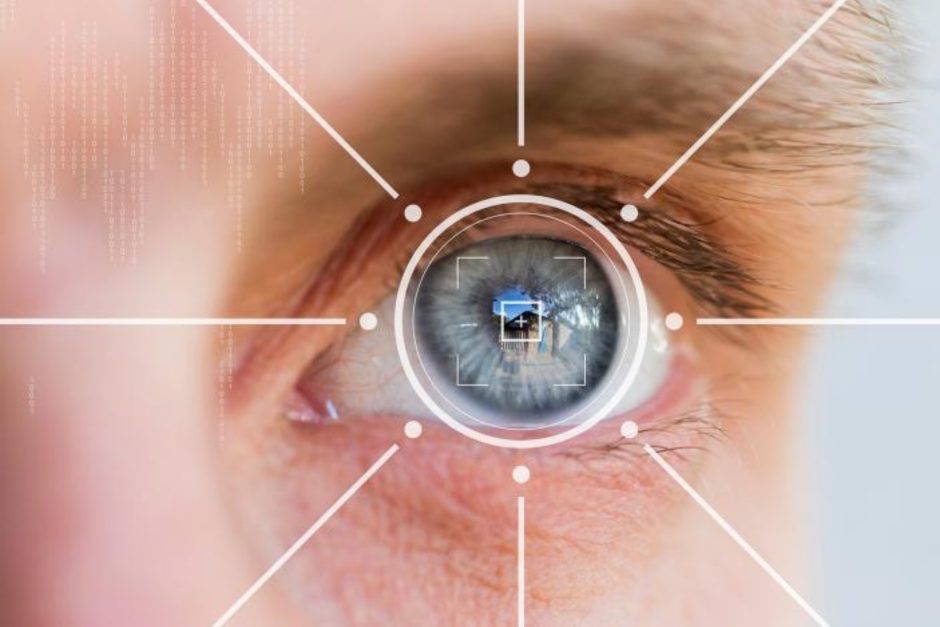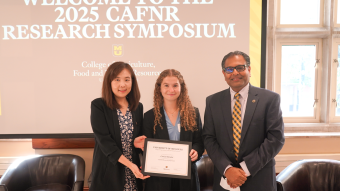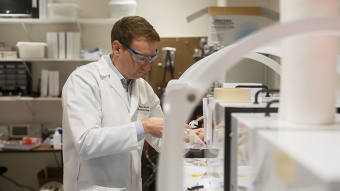
Dec. 17, 2024
There is science behind why customers prefer certain company slogans, product prices and brand logos – and Brady Hodges, assistant professor of marketing at the University of Missouri’s Robert J. Trulaske, Sr. College of Business, can prove it using high-tech marketing research to get inside consumers’ heads.
As founding director of the Trulaske Biometric and Behavioral Research Lab, Hodges works at the intersection of cognitive psychology and marketing, focusing on how people process numbers and language. At the heart of his research, he uses computer-based eye-tracking and facial expression analysis to zero in on how people view and react to such marketing tools as slogans, logos and prices ending in 99 cents.
“So, why do we care where people’s eyes are looking?” Hodges said. “We care because the eyes are connected to the brain. When we see what people are looking at, we can get insight into their preferences, choices and what drew their attention. That’s what we’re interested in as researchers.”
The research
With that in mind, Hodges began to research the linguistic properties of effective slogans. His interest in the topic intensified when he discovered there had been little scientific research into effective slogan creation. What he found was only surface level and abstract, such as slogans should be creative and skillfully worded or “capture the soul of the brand.”
That’s when Hodges went to work, putting science behind his findings. During his research, he used slogan testing and surprise memorability tests of real current slogans, fake YouTube bumper advertisements and eye-tracking technology to track people’s attention on individual words as they read slogans.
What he discovered is businesses can improve their brand recognition by making specific changes to their slogans. For example, slogans that are longer, include the brand name and use uncommon words are likely to be more memorable among potential consumers. Hodges’ findings also show that slogans that are shorter, omit the brand name and use simpler language are more likely to make the brand more likable in potential consumers’ eyes.
Hodges has completed five studies that today help businesses understand why people like or remember certain slogans better than others.
How it works
Using computer-based eye-tracking analysis is arduous work because Hodges can only test one person at a time and there can be no distractions, or the results must be discarded. Marketing students are invited to sign up for the 20-minute test which takes place in a small, sparse room that is part of the Biometric Research Lab located in the lower level of Cornell Hall.
Participants use a computer equipped with an unobtrusive eye-tracking bar that is individually calibrated to accommodate each person’s height and distance from the screen. Once images begin appearing on the screen, the bar shoots infrared light into the participant’s eyes and the corneal reflections that come back help Hodges determine what the individual is looking at on the screen.
Hodges can also read facial expressions by using computer software that identifies 31 landmarks on a participant’s face, such as the eyebrows, nose, cheeks and lips. Then, based on how those facial landmarks move during a study, the computer program categorizes the movements and predicts the likelihood that the participant is experiencing one of seven emotions: contempt, anger, disgust, joy, surprise, sadness and fear.
Read more from the Robert J. Trulaske, Sr. College of Business


